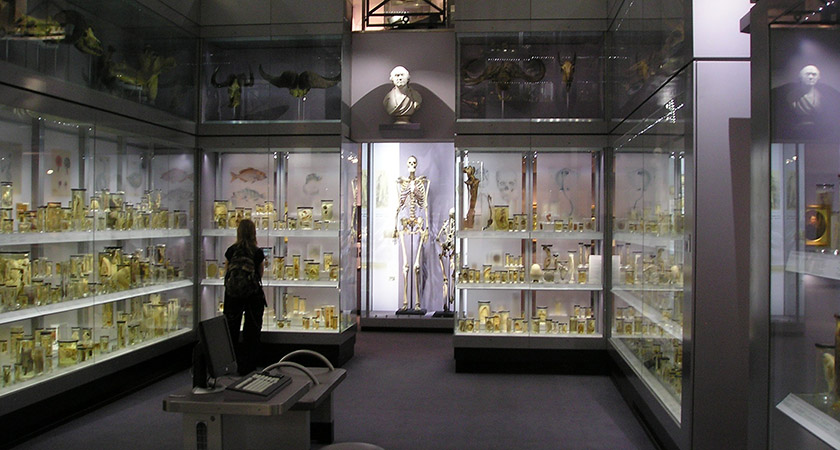THE SKELETON of an Irish 'giant' has finally been removed from its controversial display at a British museum prior to its reopening later this year.
However, the dying wishes of Charles Byrne to be buried at sea will not be fulfilled, with the Hunterian Museum at England's Royal College of Surgeons (RCS) retaining his remains.
Museum chiefs say the remains of Byrne, who suffered from acromegaly and gigantism, are 'an integral part of the Hunterian Collection and will be available for bona fide research into the conditions'.
The Irish Giant
Byrne was born in Littlebridge near Lough Neagh in the north of Ireland in 1761.
He grew to a height of 7' 7" and in the last years of his life, made a living exhibiting himself as the 'Irish Giant' in Edinburgh and London.
Before his death in 1783 at the age of 22, Byrne is reputed to have said that he wanted to be buried at sea in a lead coffin to stop his body being used for scientific research by anatomists.
However, the surgeon John Hunter, who befriended Byrne before his death, paid the Irishman's friends £500 for his body before he could be laid to rest.
Three years later, Hunter put Byrne's skeleton on display at his Leicester Square museum as part of his collection of anatomical specimens.
The RCS acquired Hunter's collection in 1799 and Byrne's skeleton has been on display at the college’s Hunterian Museum for much of the time since then.
The museum closed for renovations in 2017 but ahead of its reopening, museum trustees and RCS bosses revealed Byrne’s remains would no longer be exhibited.
In a statement, the Hunterian board said that Byrne and other anatomists of the time ‘acquired many specimens in ways we would not consider ethical today and which are rightly subject to review and discussion’.
'Sensitivities'
"During the five-year period of closure of the Hunterian Museum, the Board of Trustees of the Hunterian Collection reviewed and discussed the sensitivities and the differing views surrounding the display and retention of Charles Byrne's skeleton," read the statement.
"The Trustees, with the approval of the Council of the Royal College of Surgeons of England, agreed that Charles Byrne's skeleton will not be displayed in the new Hunterian Museum."
The museum will also launch a new programme later this year called Hunterian Provocations, which will 'explore issues around the display of human remains and the acquisition of specimens during British colonial expansion'.
However, with regards to continuing to retain Byrne's remains, the statement said there was no written evidence to support the Irishman's reputed dying wish and references to it were purely anecdotal.
After over a decade of intense campaigning from many people,its wonderful the @HunterianLondon has finally recognised the "insensitivity" of the display of Charles Byrne's remains! The next step - the burial he wanted - would be even better...https://t.co/CQ9Eimq6lV
— Thomas L Muinzer (@LMuinzer) January 11, 2023
Dr Thomas Muinzer of the University of Aberdeen, who has long campaigned for Byrne's remains to be removed, welcomed the decision.
"After over a decade of intense campaigning from many people, it’s wonderful the @HunterianLondon has finally recognised the 'insensitivity' of the display of Charles Byrne's remains!" he tweeted.
"The next step — the burial he wanted — would be even better…"


